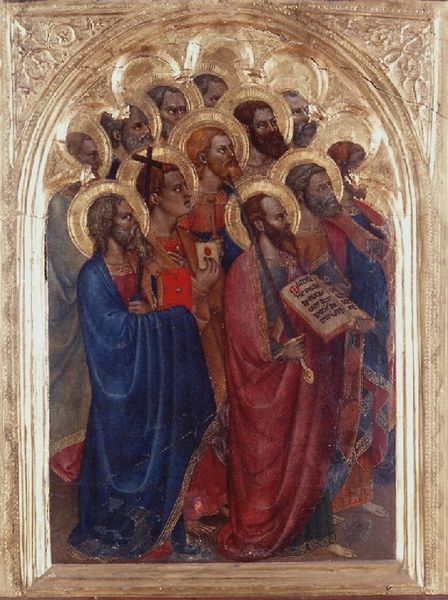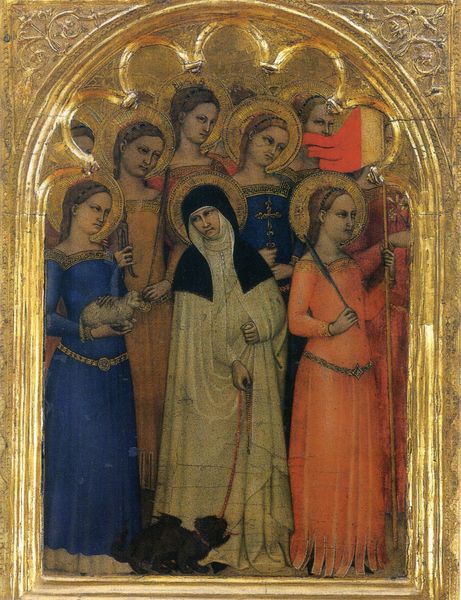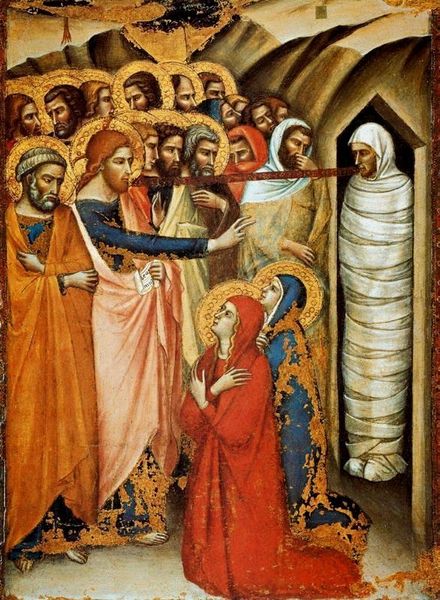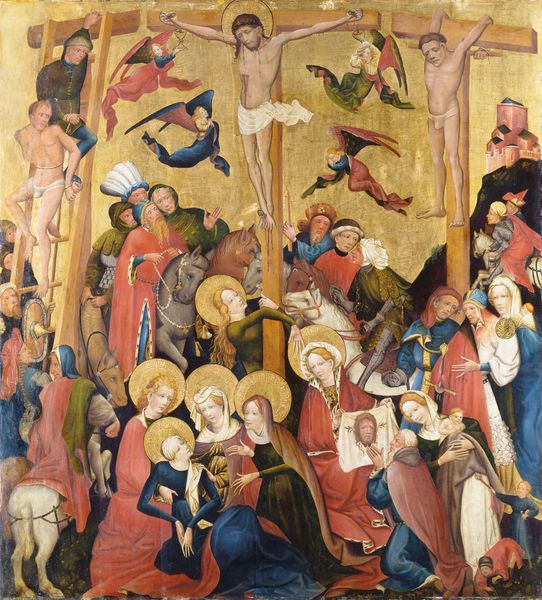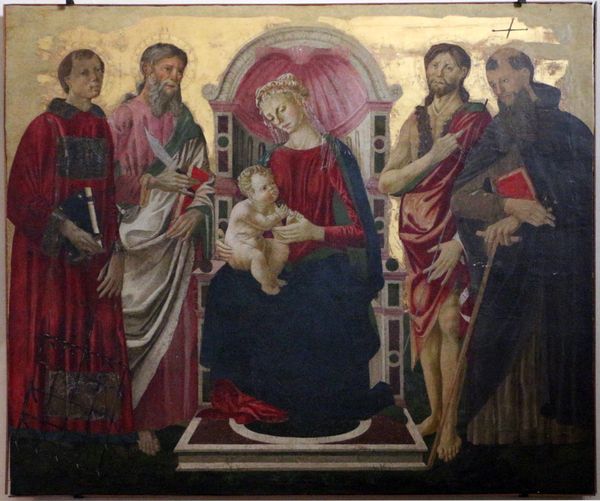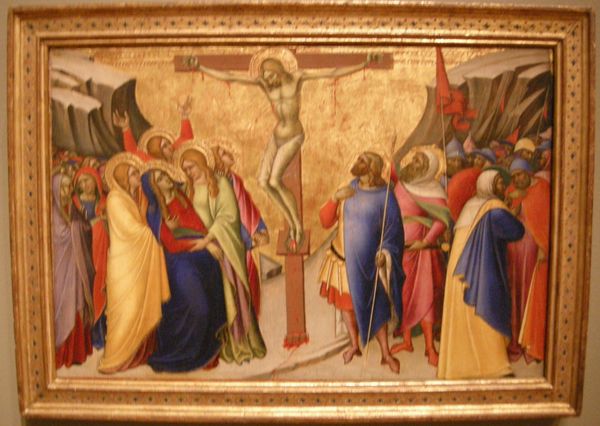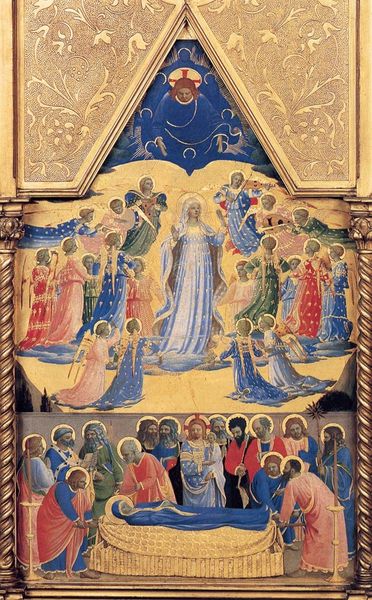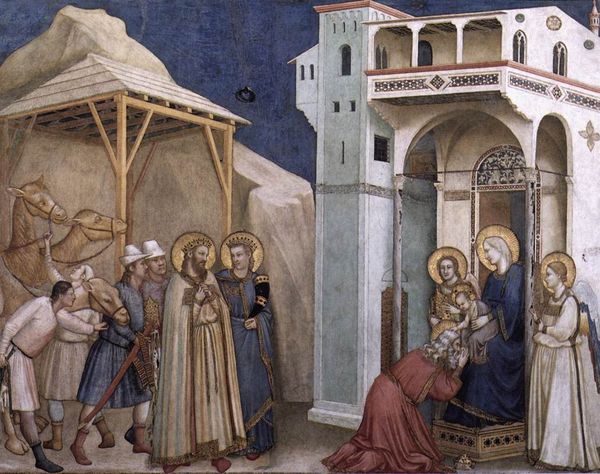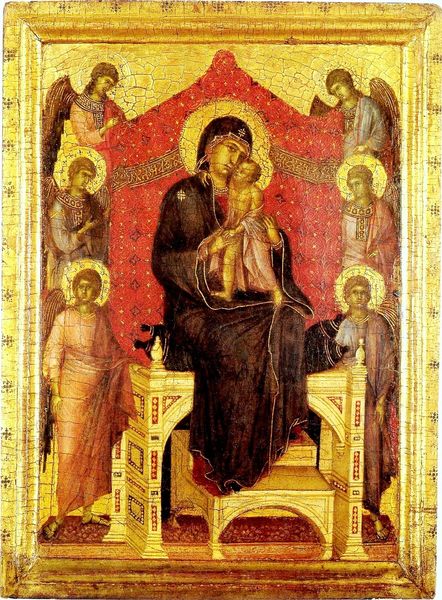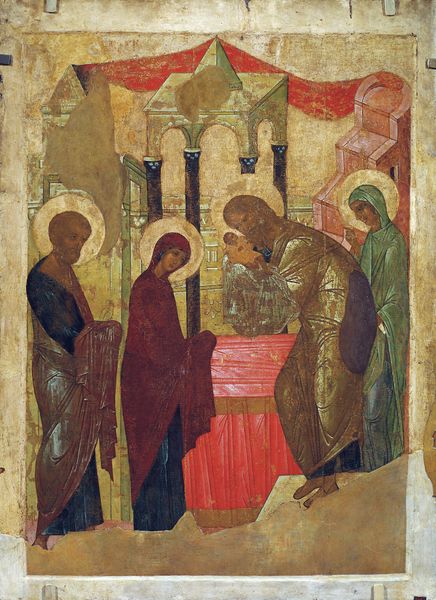
tempera, painting
#
gouache
#
medieval
#
tempera
#
painting
#
figuration
#
oil painting
#
history-painting
#
italian-renaissance
#
watercolor
Copyright: Public domain
Curator: Oh, the drama! Looking at Luca di Tommè’s "Resurrection of Lazarus" from 1362… it's like everyone's acting in their own intense little play. What grabs you first? Editor: It’s the color, definitely. That stark contrast of Lazarus wrapped in white against the rich reds and blues of the figures clustered around him… it pulls your eye immediately to that tomb entrance. There’s a sort of…stage-like quality to the composition. Everyone is carefully positioned. Curator: Absolutely. Di Tommè knew how to work the symbolic stage. Notice how Christ, dressed in pink robes, is set apart, he is positioned between Lazarus and the viewers, as though inviting us to believe the possibility of what is unfolding before us. Lazarus emerges like a pale ghost in bright daylight, which, in that era, served as a message for believers to accept and fear God's judgement and actions. The gaze is meant to inspire the soul. Editor: And how those gold halos practically vibrate against the somber backdrop! Gold in religious art of this period functioned very strategically, signifying not only holiness but also, you know, institutional power. Think about who was commissioning these pieces, and where they were placed, inside prominent religious locations and palaces. Curator: A gilded flex, if you will. I love seeing how he renders emotion. Mary Magdalene's in front kneeling, pleading – pure theatrical sorrow! And behind Christ you have these men kind of… side-eyeing Lazarus like “Did…did we just see that?!” Editor: They are an assortment of attitudes, aren't they? Fear, curiosity, a bit of skeptical judgement. What strikes me as odd is that we have all this vibrant emotionality combined with such static, almost doll-like figures. What do you think of that choice? Curator: Hmmm, interesting question. He focuses his energy and detail on emotional expressions and composition – and remember, this is tempera, which wasn’t as forgiving for creating realistic details like oil paints might have been, then and now! So maybe the "doll-like" quality adds to that sense of removed holiness – that these are archetypes, not people we'd pass on the street. They're on a different plane, acting out a sacred narrative. Editor: Good point! And looking at the wider picture, what can paintings like this one tell us about religious belief and the role of visual storytelling in shaping those beliefs during the 14th century? I see a powerful and propagandistic art in pieces such as these, meant for edification and fear. Curator: Absolutely a story told in the tones and colours and symbols that had the purpose to influence both believer and non believer. Editor: Ultimately, "Resurrection of Lazarus" gives us both a miracle and an inquiry into society! Curator: Indeed, I always learn from it. And this image stays with me because that drama never ceases to deliver.
Comments
No comments
Be the first to comment and join the conversation on the ultimate creative platform.
